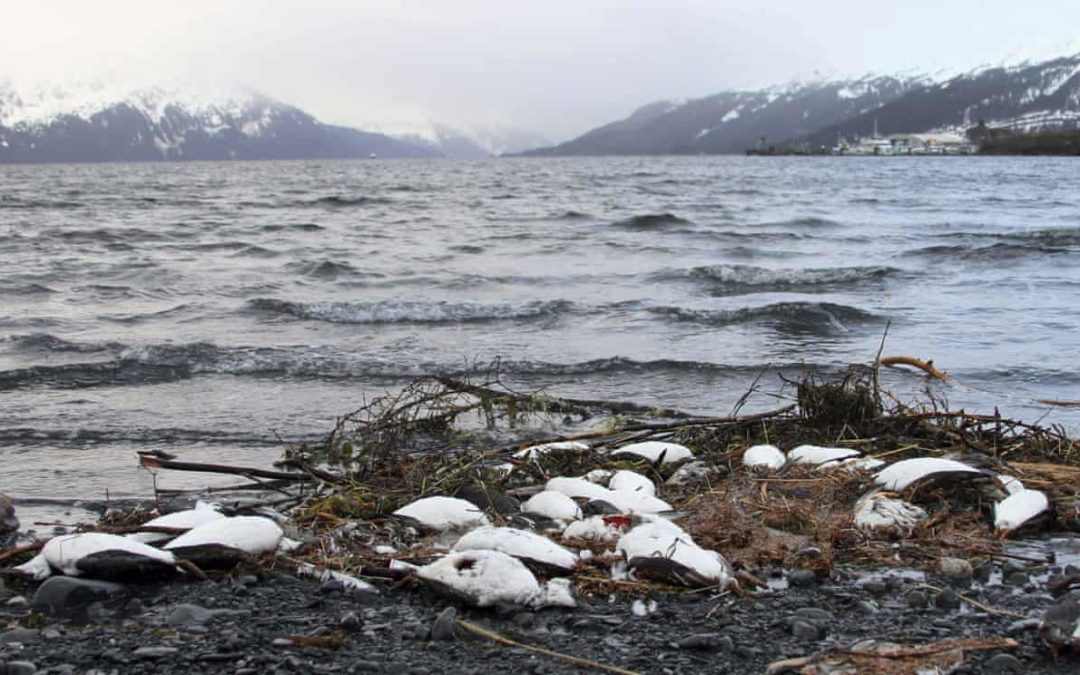SOURCE: The Guardian
DATE: January 16, 2020
SNIP: A million seabirds died in less than a year as a result of a giant “blob” of hot ocean water off the coast of New Zealand, according to new research.
A study released by the University of Washington found the birds, called the common murre, probably died of starvation between the summer of 2015 and the spring of 2016.
Most dead seabirds never wash ashore, so while 62,000 dead or dying murres were found along the coasts of Alaska, Washington, Oregon and California, researchers estimate the total number is closer to 1 million.
Alaska saw the most birds wash up. In Prince William Sound in southern Alaska, more than 4,500 bird carcasses were found every kilometer, or 0.62 miles.
The blob stems from a years-long severe marine heatwave, believed to be caused by an anticyclone weather system that first appeared in 2013. A weather phenomenon known as El Niño accelerated the warming temperatures beginning in 2015 and, by 2016, the rising heat resulted in water temperatures nearly 11F (6C) above average.
Anticyclones form when a mass of air cools, contracts and becomes more dense, increasing the weight of the atmosphere and the surface air pressure.
Heat maps at the time showed a massive red blob growing, spanning more than 380,000 sq miles (1 million sq km). That’s nearly 1.5 times the size of Texas or four times larger than New Zealand.
The study found that the murres mostly likely starved to death. The seabird must eat half its body weight to survive, but food grew scarce amid intense competition from other creatures. Warming ocean waters gave fish such as salmon and halibut a metabolism boost, causing a fight for survival over the limited supply of smaller fish.
Researchers also uncovered other effects, including a massive bloom of harmful algae along the US west coast that cost fisheries millions of dollars in revenue. Other animals also died off, including sea lions, tufted puffins and baleen whales.
The murres’ population also took a hit. According to the study, a limited food supply resulted in reduced breeding colonies across the entire region. Between the 2015 and 2016 breeding seasons, more than 15 colonies did not produce a single chick. Researchers say those estimates could be low since they only monitor a quarter of all colonies.
Meanwhile, another huge heat blob has formed off the Washington coast and up into the Gulf of Alaska, and is growing.

